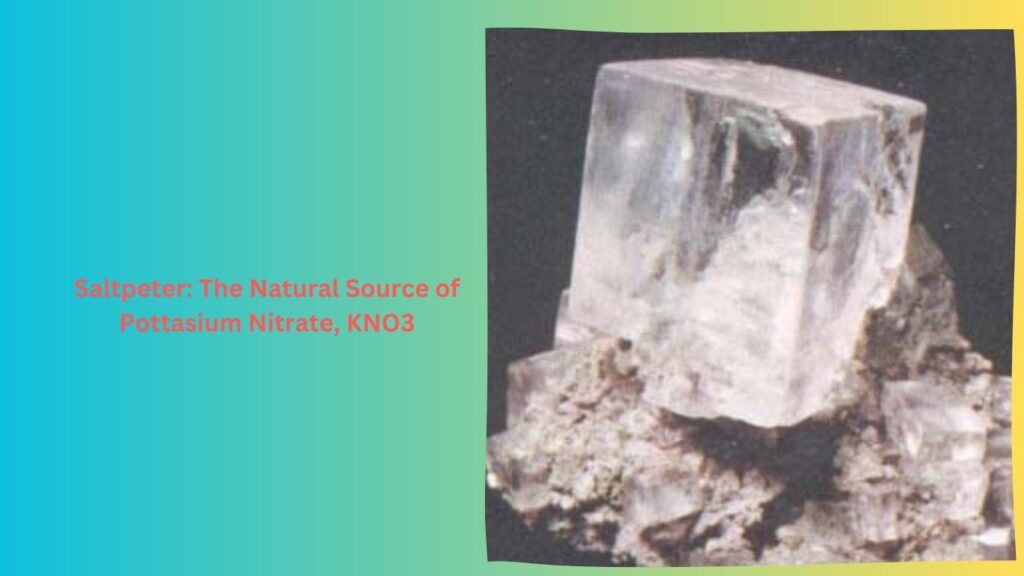Common food additives, fertilisers, and oxidizers for fireworks and rockets include saltpetre. It serves as one of the main components of gunpowder. It is typically found in impure form and is frequently referred to as saltpetre (also known as nitre).
Its name is derived from the Latin sal patrae, which means “salt of the rock,” because it is frequently discovered as a white powder formed on the surface of rocks.
Saltpeter or Potassium Nitrate
KNO3 is a naturally occurring mineral source sometimes known as saltpeter or potassium nitrate. Depending on where you reside, you might spell it “saltpeter” instead of “saltpetre.” Before chemical names became established, saltpeter was also referred to as nitrate of potash.
It is divided into three categories:
1) Common saltpetre, also known as potassium nitrate (KNO3);
2) Chile saltpetre, also known as cubic niter; and
3) Lime saltpetre, also known as wall saltpetre and calcium nitrate (Ca(NO3)2). These three nitrates typically appear as efflorescence, created when nitrogenous material is exposed to alkalis and alkaline earth and is oxidized. We’ll now quickly review the various saltpetres.
Potassium nitrate characteristics
It possesses an orthorhombic crystal structure at ambient temperature, which changes to a trigonal system at 129 °C (264 °F). Potassium nitrate is only slightly soluble in water, but as the temperature rises, so does its solubility.
With a pH of 6.2 at 14 °C (57 °F) for a 10% solution of commercial powder, it is nearly neutral in its aqueous condition. Although it can react explosively with reducing chemicals, it is not explosive on its own. It cannot dissolve in alcohol and is not toxic.
Utilisations of potassium nitrate
- Its most frequent application is probably as an oxidant in black powder. It also supplied all of the world’s weaponry with explosive power since the beginning of time. However, it is still used today in “rocket candy” and black powder rocket motors in combination with other fuels like sugars. Additionally used as fireworks like smoke bombs. In order to maintain a uniform burn of the tobacco, it is blended with cigarettes.
- Potassium nitrate is still used as a food additive in products like salami, dry-cured ham, charcuterie, and (in some nations) the brine used to produce corned beef. In the US, Australia, and New Zealand, it is now used as a food ingredient.
- Food preparation: Potassium nitrate, often known as saltpetre, is frequently used in West African cooking as a thickening agent in soups and stews such as okra soup and isi ewu.
- When boiling beans and tough meat, it also greatly aids in softening the meal and cutting down on cooking time. Additionally, saltpetre is a necessary component in the preparation of unique porridges such kunun kanwa.
Potassium Nitrate Side Effects
There are several potential health hazards. It can lead to respiratory issues when inhaled, including coughing and shortness of breath. Contact with the skin or the eyes may irritate them, causing redness, itching, and pain. In addition to headaches and stomach upset, it may result in anaemia or kidney damage.

